Acelerar la eliminación de enfermedades
Capítulo 2: Progreso regional hacia las metas de eliminación de enfermedades
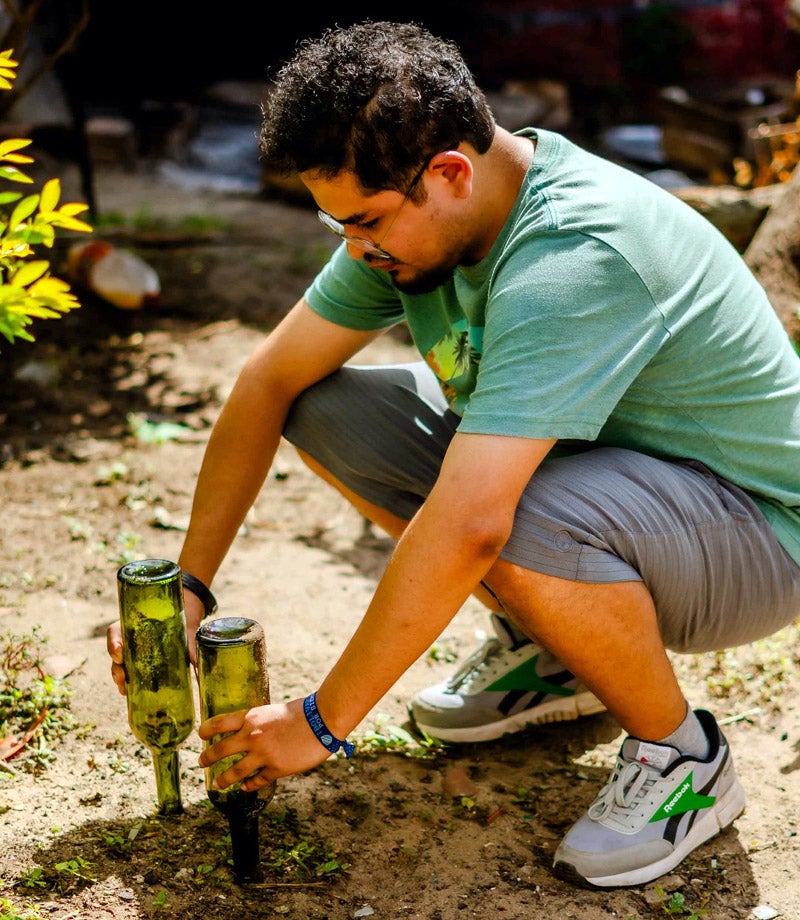 Resumen
Resumen
En el 2022 persistía una importante carga de enfermedad en la Región, con millones de personas en riesgo de presentar las más de 30 enfermedades y condiciones incluidas en la Iniciativa de Eliminación de Enfermedades. El progreso hacia las metas de eliminación varía mucho según las enfermedades y los países. Se han eliminado siete enfermedades en toda la Región, entre ellas la poliomielitis y otras enfermedades prevenibles mediante vacunación. Otras enfermedades, como la malaria, la oncocercosis y la transmisión maternoinfantil del VIH y la sífilis, se han eliminado en algunos países. Sin embargo, aún se requiere un esfuerzo considerable para alcanzar las metas de eliminación de muchas enfermedades, como el cáncer cervicouterino, la tuberculosis, las hepatitis virales, la infección por el VIH/sida y las enfermedades infecciosas desatendidas y zoonóticas. Algunos de los factores que obstaculizan el progreso son la pobreza, la falta de acceso a los servicios de atención de salud y de saneamiento, y algunos desafíos ambientales. La acción gubernamental e intersectorial garantizará el acceso a la prevención, la detección y el tratamiento para los grupos poblacionales afectados por todas las enfermedades y condiciones comprendidas en la iniciativa.
Situación de las metas de eliminación en la Región de las Américas
La OPS está dando seguimiento a los avances hacia indicadores y metas específicos relacionados con cada una de las enfermedades y las condiciones (más de 30 en total) incluidas en la iniciativa. El portal regional de datos contiene definiciones de eliminación, indicadores y metas para cada enfermedad y problema incluido en la iniciativa. Para fines del 2024, la OPS mejorará el proceso de seguimiento con la inclusión de indicadores que permitan rastrear los avances en las cuatro líneas de acción. Esto proporcionará una visión general completa de los avances y los efectos a nivel tanto de país como regional, más allá de las mediciones consolidadas por enfermedades.
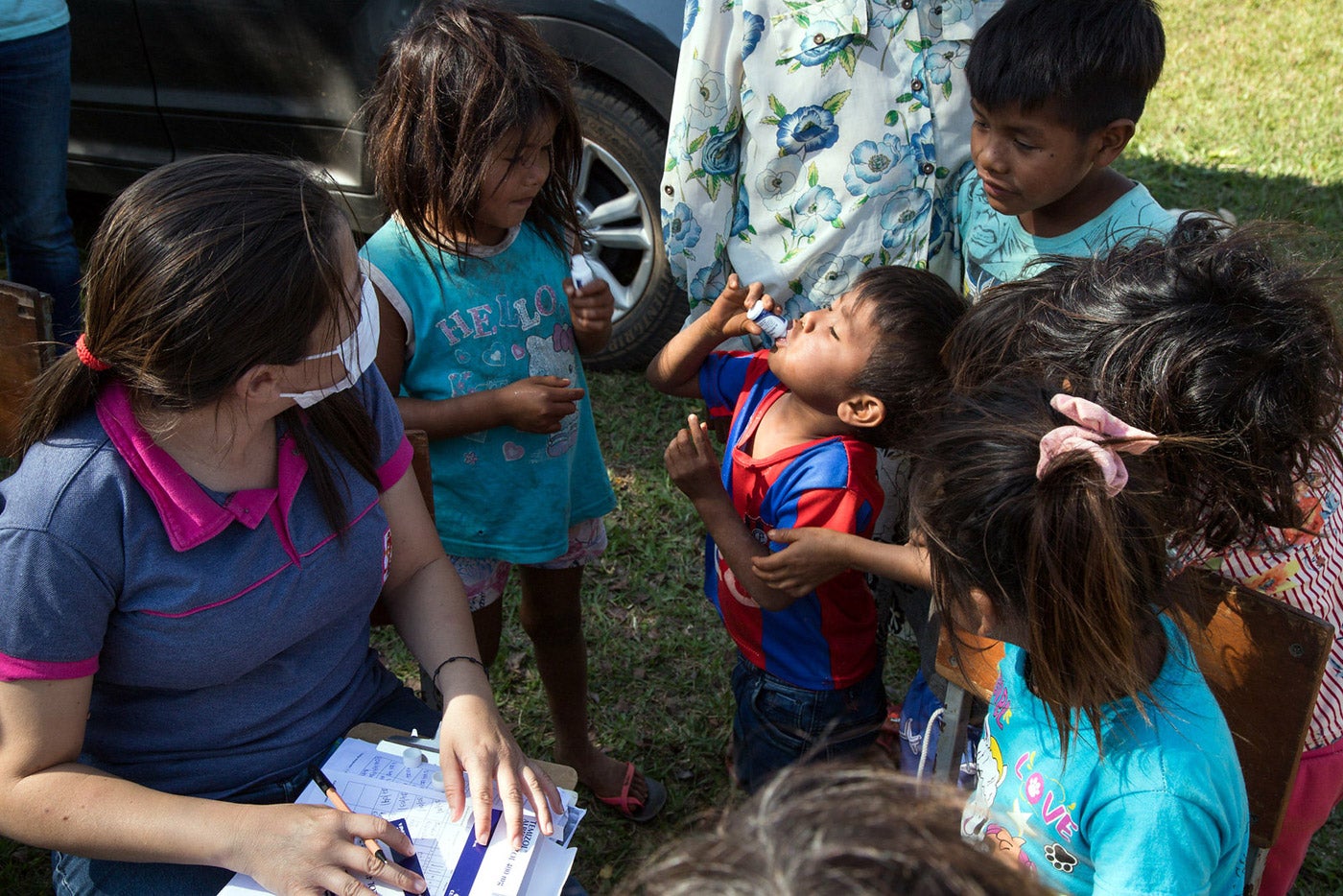 © OPS
© OPS
Recuadro 6. ¿Es necesario abordar cada una de las más de 30 enfermedades y condiciones en cada país y territorio de la Región de las Américas?
No todas las metas serán pertinentes para todos los países y territorios. La Región de las Américas es diversa, con una variedad de climas, comunidades, desigualdades y factores de riesgo debido a los cuales ciertas enfermedades son más prevalentes en algunas zonas. Si bien algunas, como las infecciones de transmisión sexual y las hepatitis virales, son pertinentes para todos los países y territorios, otras no lo son. Por ejemplo, las enfermedades infecciosas transmitidas por vectores, las enfermedades zoonóticas y las enfermedades infecciosas desatendidas afectan solo a ciertos países y zonas, y a determinados grupos poblacionales dentro de los países. Por lo tanto, cada país debe adaptar las medidas integradas y hojas de ruta hacia la eliminación teniendo en cuenta la presencia de cada enfermedad en el contexto de cada grupo poblacional dentro del territorio nacional.
La iniciativa abarca un grupo diverso de enfermedades y condiciones que se procura eliminar o cuyo estado de eliminación se quiere mantener. La figura 4 contiene una lista de las enfermedades y afecciones, con el número de países y territorios —de los 49 abarcados por la iniciativa— donde está presente cada una.
Figura 4. Número de países y territorios donde se encuentra cada enfermedad y problema incluido en la iniciativa de eliminación
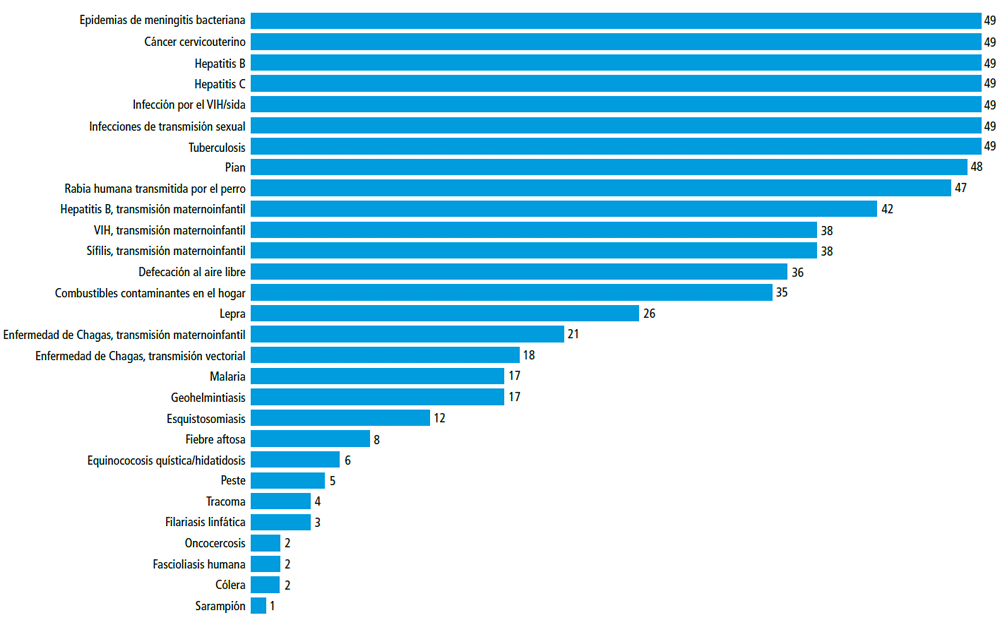
En números
Carga de enfermedad de algunas enfermedades seleccionadas en la Región de las Américas en el 2022
![]()
Más de 45 millones
Más de 45 millones de menores de 15 años corrían el riesgo de contraer parasitosis intestinales
![]()
21 000 casos nuevos
Se notificaron más de 21 000 casos nuevos de lepra
![]()
Más de 3,9 millones de personas
Más de 3,9 millones de personas tenían la infección por el VIH. De esas personas, alrededor de 170 000 habían contraído la infección ese año
![]()
Más de 78 000 mujeres
Se diagnosticó cáncer cervicouterino en más de 78 000 mujeres
![]()
1,6 millones de personas
1,6 millones de personas corrían el riesgo de contraer esquistosomiasis
![]()
480 000 casos
Se notificaron 480 000 casos de malaria
En la siguiente sección se presentan datos sobre las enfermedades y las condiciones comprendidas en la iniciativa según las siguientes categorías: 1) se han alcanzado las metas; 2) se están por alcanzar las metas; y 3) todavía no se han alcanzado las metas.
https://www.paho.org/es/portal-datos-eliminacion
Consulte el portal regional de datos, donde encontrará información actualizada y un panorama completo de los avances hacia la eliminación de más de 30 enfermedades transmisibles y condiciones relacionadas en la Región de las Américas para el 2030. Haga clic en la pestaña “Indicators and targets” para obtener información detallada [en inglés] sobre los indicadores finales de eliminación y las metas específicas para cada enfermedad y problema.
Enfermedades y condiciones cuyas metas de eliminación se han alcanzado
Enfermedades eliminadas en toda la Región
Se han eliminado siete enfermedades a nivel regional: la dracunculosis y seis enfermedades prevenibles mediante vacunación (viruela, poliomielitis, rubéola, rubéola congénita, sarampión y tétanos neonatal). Estas enfermedades se han podido eliminar en la Región gracias a la vacunación masiva, el fortalecimiento de la vigilancia, la educación sobre salud pública y la colaboración internacional para apoyar la labor de los distintos países.
El último caso de poliomielitis en la Región se registró en 1991. En 1994, la Región de las Américas se convirtió en la primera región del mundo en ser certificada libre de la enfermedad. Sin embargo, en julio del 2022, se diagnosticó poliomielitis causada por un poliovirus derivado de la vacuna a un paciente de Estados Unidos que no había sido vacunado y no tenía antecedentes de viajes recientes. Esto desencadenó una respuesta inmediata. Si bien el riesgo de reintroducción de la poliomielitis está disminuyendo en la Región, la cobertura baja de la vacunación aumenta la probabilidad de mutación de los poliovirus, lo que podría llevar a la aparición de una cepa capaz de causar infección y parálisis. La cobertura regional con la tercera dosis de la vacuna antipoliomielítica fue del 87% en el 2023, en comparación con el 80% al 83% en los tres años precedentes. Sin embargo, a pesar de estos avances, algunos países aún no han alcanzado el objetivo recomendado de una cobertura vacunal del 95% a nivel nacional (1).
Después de un decenio de campañas de vacunación que llegaron a alrededor de 250 millones de personas en 32 países, los últimos casos de rubéola endémica en la Región de las Américas se notificaron en el 2009. En el 2015 se certificó que la Región estaba libre de rubéola endémica. La proporción de la población infantil que recibió la primera dosis de la vacuna contra el sarampión, las paperas y la rubéola fue del 87% en el 2023, superior al 84% alcanzado en el 2022. Sin embargo, aún no se ha alcanzado la cobertura ideal recomendada por la OPS del 95% como mínimo (2).
En septiembre del 2016 se certificó que la Región de las Américas estaba libre de sarampión, la única región del mundo que ha alcanzado este objetivo. Posteriormente, el sarampión reapareció en 14 países, entre ellos la República Bolivariana de Venezuela y Brasil, donde se restableció la transmisión endémica en el 2018 y el 2019, respectivamente. La República Bolivariana de Venezuela fue recertificada como país libre de sarampión endémico en noviembre del 2023; Brasil interrumpió la circulación del virus en julio del 2022 y está esperando la recertificación de la Comisión Regional.
El tétanos materno y neonatal se eliminaron en la Región en el 2017, pero en el 2022 se notificaron siete casos de tétanos neonatal. En el 2023, la cobertura regional con la tercera dosis de la vacuna contra la difteria, el tétanos y la tosferina fue del 88%, superior a la cobertura del 84% notificada en el 2022.
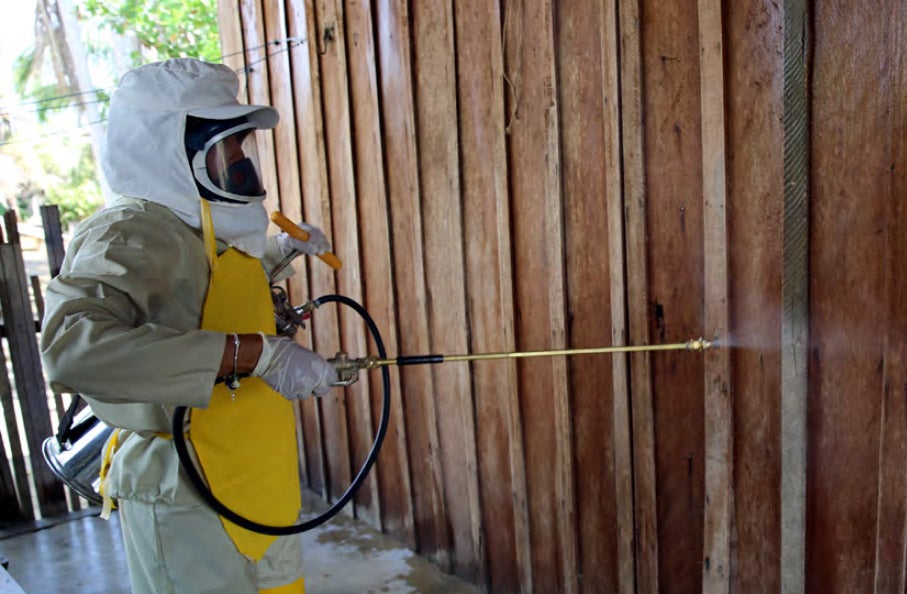 También se han hecho grandes avances en la eliminación de las enfermedades transmitidas por vectores en la Región. Desde el 2008 no se han registrado casos de fiebre amarilla urbana transmitida por el mosquito Aedes aegypti, aunque hay varios factores que amenazan al mantenimiento del estado de eliminación. La urbanización, la deforestación y el cambio climático amplían los hábitats de los mosquitos y las temporadas de reproducción. Los movimientos poblacionales y la cobertura insuficiente de la vacunación aumentan la propagación del virus. Para eliminar las epidemias de fiebre amarilla es necesario ampliar la vacunación, y mejorar la vigilancia, el control de mosquitos, la vigilancia de las epizootias, las plataformas de laboratorio y el intercambio de información en tiempo real entre los países, así como fortalecer los sistemas de salud pública.
También se han hecho grandes avances en la eliminación de las enfermedades transmitidas por vectores en la Región. Desde el 2008 no se han registrado casos de fiebre amarilla urbana transmitida por el mosquito Aedes aegypti, aunque hay varios factores que amenazan al mantenimiento del estado de eliminación. La urbanización, la deforestación y el cambio climático amplían los hábitats de los mosquitos y las temporadas de reproducción. Los movimientos poblacionales y la cobertura insuficiente de la vacunación aumentan la propagación del virus. Para eliminar las epidemias de fiebre amarilla es necesario ampliar la vacunación, y mejorar la vigilancia, el control de mosquitos, la vigilancia de las epizootias, las plataformas de laboratorio y el intercambio de información en tiempo real entre los países, así como fortalecer los sistemas de salud pública.
Enfermedades eliminadas en algunos países
La Malaria se ha eliminado en 19 países. Entre el 2000 y el 2022, la Región avanzó considerablemente en la reducción de la carga de la malaria: los casos disminuyeron alrededor del 64% (de 1,5 millones a 550 000), y el total de muertes por malaria se redujo en un 60%, de 850 a 343. Los países certificados más recientemente como libres de malaria son Paraguay (2018), Argentina (2019), El Salvador (2021) y Belice (2023) (3).
También se han visto avances en la Región en relación con la transmisión maternoinfantil de algunas enfermedades, particularmente en los países y territorios del Caribe. Se ha logrado la eliminación de la transmisión maternoinfantil de la sífilis y el VIH en 11 países y territorios (Anguila, Antigua y Barbuda, Belice, Bermudas, Cuba, Dominica, Islas Caimán, Jamaica, Monserrat, Saint Kitts y Nevis, y San Vicente y las Granadinas).
También se ha avanzado en la eliminación de enfermedades infecciosas desatendidas y de enfermedades zoonóticas. La transmisión de la fiebre aftosa se ha interrumpido en 12 de los 18 países donde se encuentra esta enfermedad. La oncocercosis se ha eliminado en cuatro de los seis países con endemicidad de la Región (Colombia, Ecuador, Guatemala y México), los únicos del mundo que han alcanzado las metas de eliminación. En el 2011, tres países (Costa Rica, Suriname y Trinidad y Tabago) fueron retirados de la lista de la OMS de países donde la filariasis linfática es endémica,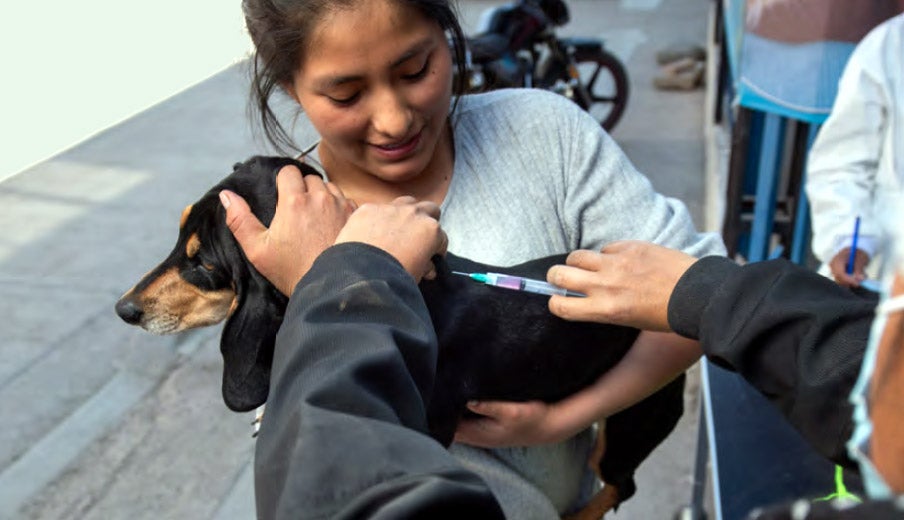 y en el 2024 se validó la eliminación en Brasil. Entretanto, en República Dominicana se interrumpió la administración masiva de medicamentos en la totalidad de la zona donde esta enfermedad es endémica, y persiste la endemicidad en otros dos países (Guyana y Haití). En tres países (Chile, Paraguay y Uruguay) se ha interrumpido la transmisión vectorial de la enfermedad de Chagas, y en todos los países de la Región donde esta enfermedad es endémica se hacen exámenes de detección de todos los donantes de sangre y productos sanguíneos para prevenir la transmisión. El tracoma se eliminó en México (uno de los cuatro países de la Región de las Américas donde es endémico) en el 2017. Además, en el 2019, México se convirtió en el único país del mundo en alcanzar el hito de la eliminación de la rabia humana transmitida por el perro.
y en el 2024 se validó la eliminación en Brasil. Entretanto, en República Dominicana se interrumpió la administración masiva de medicamentos en la totalidad de la zona donde esta enfermedad es endémica, y persiste la endemicidad en otros dos países (Guyana y Haití). En tres países (Chile, Paraguay y Uruguay) se ha interrumpido la transmisión vectorial de la enfermedad de Chagas, y en todos los países de la Región donde esta enfermedad es endémica se hacen exámenes de detección de todos los donantes de sangre y productos sanguíneos para prevenir la transmisión. El tracoma se eliminó en México (uno de los cuatro países de la Región de las Américas donde es endémico) en el 2017. Además, en el 2019, México se convirtió en el único país del mundo en alcanzar el hito de la eliminación de la rabia humana transmitida por el perro.
En los últimos 15 años también se han hecho grandes avances hacia la eliminación del cólera. Sin embargo, si bien 47 países y territorios han alcanzado sus metas de eliminación, la reaparición de Vibrio cholerae O1 en Haití a fines del 2022 plantea un desafío para los objetivos regionales, lo que demuestra el riesgo de reaparición del cólera por reservorios ambientales. En el 2023, República Dominicana y Haití notificaron 149 y 56 355 casos, respectivamente. En Haití, la actual crisis humanitaria y de seguridad dificultó el seguimiento de los casos de cólera, dado que las personas tienen poco acceso a la atención de salud y a los centros de pruebas. La eliminación del cólera y el mantenimiento eficaz de dicha eliminación requieren una vigilancia sólida y la notificación oportuna de casos, junto con una mejor infraestructura de agua y saneamiento y campañas de educación pública.
Desde 1900 hasta agosto del 2024 se han registrado 499 “eventos de eliminación” en la Región de las Américas. Un evento de eliminación se produce cuando se elimina una enfermedad o afección en un país o territorio. Para proteger los logros de la Región, es necesario que cada Estado Miembro fortalezca los sistemas de seguimiento, continúe con los programas de vacunación (especialmente en las comunidades con cobertura baja), contrarreste la información errónea y colabore con distintos sectores para reducir el impacto del cambio climático, que podría implicar la reaparición de algunas enfermedades. Es fundamental abordar los aspectos sociales, económicos y culturales de las comunidades y fomentar la implicación comunitaria, no solo creando conciencia sobre el riesgo de enfermedad y subrayando la necesidad continua de medidas de prevención, sino también mejorando su participación en programas y actividades de salud.
Enfermedades y condiciones cuyas metas de eliminación casi se han alcanzado
En el caso de algunas enfermedades y condiciones, la evidencia muestra que se han alcanzado las metas de eliminación en algunos países, pero el proceso de certificación, verificación o validación aún no ha concluido.
Varios países están a punto de eliminar algunas enfermedades infecciosas y zoonóticas desatendidas. Aunque la evidencia actual parece indicar que la transmisión del pian se ha detenido en toda la Región, ningún país, excepto Ecuador, lo ha confirmado. Si bien los casos de pian notificados disminuyeron notablemente después de 1970, muchos países interrumpieron la vigilancia necesaria para detectar la reaparición y certificar la eliminación. A pesar de que Colombia notificó por última vez casos confirmados de pian en 1992 y Haití lo hizo en el 2015, ambos países notificaron casos presuntos a la OPS entre el 2014 y el 2017. Para confirmar que la enfermedad no está presente en estos dos países es necesario examinar los registros pasados, recopilar información nueva, y realizar estudios clínicos y serológicos en las zonas donde la enfermedad era endémica.
La rabia humana transmitida por el perro está a punto de ser eliminada en 37 países y territorios. Las medidas para eliminar esta enfermedad en la Región de las Américas se iniciaron en 1983 con la puesta en marcha de un programa regional contra la rabia. Desde entonces, la incidencia en la Región se ha reducido en un 98%, de 300 casos notificados en 1983 a 5 en el 2023. Este progreso es el resultado de campañas masivas de vacunación canina a nivel regional, campañas de concientización, una mayor disponibilidad de profilaxis anterior y posterior a la exposición, la mejora de la calidad de los tratamientos inmunobiológicos, y el fortalecimiento de la capacidad de vigilancia y diagnóstico en los países.
La fiebre aftosa está a punto de ser eliminada en 12 países. En particular, América del Sur ha estado libre de fiebre aftosa durante más de un decenio y está avanzando hacia la erradicación. Los últimos brotes notificados en esta subregión se produjeron en el 2017 y el 2018 en Colombia, presuntamente vinculados a la introducción ilegal de animales en la frontera con la República Bolivariana de Venezuela. En el 2020, Colombia fue declarada nuevamente libre de fiebre aftosa con vacunación. Los avances hacia la interrupción de la transmisión (que contribuyen al objetivo de la erradicación) de la fiebre aftosa en América del Sur son el resultado de medidas de prevención, vigilancia y control, incluida la vacunación del ganado, la detección temprana y el control rápido de brotes.
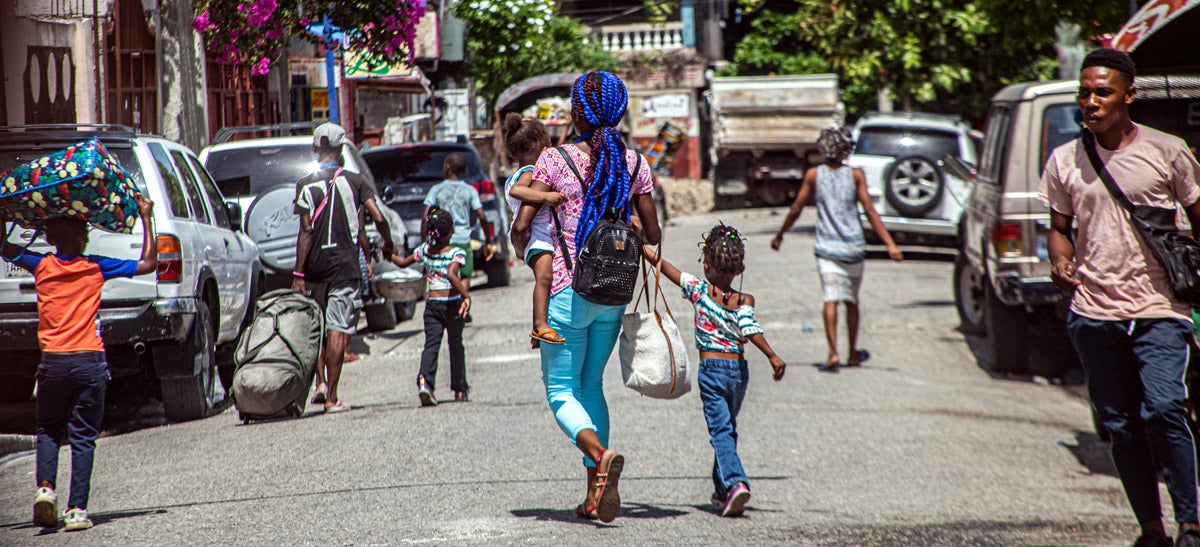 © OPS
© OPS
Aunque los países no han proporcionado confirmación, las autoridades de salud sospechan que en nueve países y territorios del Caribe (Antigua y Barbuda, Guadalupe, Martinica, Montserrat, Puerto Rico, República Dominicana, Saint Kitts y Nevis, San Martín y Santa Lucía) se ha eliminado la esquistosomiasis, ya que el último caso en seres humanos se registró en el 2010. Chile está recopilando datos y siguiendo los procedimientos de la OMS para documentar su estado en lo que respecta al cumplimiento de los hitos de la interrupción de la transmisión y la eliminación de la lepra. En Brasil, la peste está cerca de ser eliminada, y no se han notificado casos desde hace varios años. En el 2023, Suriname estaba por cumplir tres años sin transmisión autóctona de malaria, que es una condición para solicitar la certificación de la OMS.
La eliminación de la transmisión maternoinfantil de la hepatitis B está a punto de lograrse en 17 países. La prevalencia de la hepatitis B en la Región ha disminuido en los últimos decenios, principalmente debido a la introducción de una vacuna a principios de los años noventa. Se estima que la prevalencia de la infección crónica por hepatitis B en menores de 5 años en la Región de las Américas es de menos del 0,5%, la más baja entre las regiones de la OMS, razón por la cual es factible eliminar la transmisión vertical y la transmisión del virus en la primera infancia.
La Región también ha avanzado en la eliminación de los dos factores de riesgo ambiental incluidos en la Iniciativa de Eliminación de Enfermedades: 20 países están cerca de eliminar la defecación al aire libre, y 13 países están cerca de eliminar el uso de combustibles contaminantes en los hogares.
En los próximos años podrían lograrse hasta 152 eventos de eliminación. La Región tiene grandes posibilidades de acelerar los esfuerzos y alcanzar las metas de eliminación de enfermedades y condiciones que están a punto de ser logradas. En el caso de algunas de las enfermedades y las condiciones mencionadas anteriormente, el paso clave es confirmar el estado epidemiológico actual, puesto que la OPS y sus Estados Miembros sospechan que es posible que ya se haya logrado la eliminación. En el caso de otras, los componentes críticos necesarios para llegar al hito final son cerrar las brechas en las intervenciones, mejorar la vigilancia y compilar la evidencia.
Enfermedades y condiciones cuyas metas de eliminación todavía no se han alcanzado
En lo que respecta a algunas enfermedades, como el cáncer cervicouterino, la tuberculosis, la hepatitis C, la hepatitis B, la infección por el VIH/sida, la meningitis bacteriana y las infecciones de transmisión sexual, ningún país de la Región ha alcanzado todavía las metas de eliminación. La eliminación de la transmisión maternoinfantil del VIH, la sífilis, la hepatitis B y la enfermedad de Chagas todavía constituye un desafío en varios países, junto con la eliminación de la malaria, el cólera, la defecación al aire libre y el uso de combustibles contaminantes en el hogar. Las enfermedades infecciosas desatendidas y las zoonosis todavía afectan a millones de personas en toda la Región, en particular las que no tienen acceso a servicios básicos, como servicios de salud, educación, agua y saneamiento.
En la Región de las Américas, se diagnosticó cáncer cervicouterino a más de 78 706 mujeres en el 2022, con casi 40 135 muertes. La cobertura con la vacuna contra el virus del papiloma humano (VPH), que es crucial para prevenir este tipo de cáncer, presenta notables variaciones, del 2% en algunos países al 87% en Canadá. Algunas de las barreras para elevar la tasa de vacunación están relacionadas con las políticas y el acceso, además de ideas equivocadas con respecto a las vacunas. Las pruebas de detección del VPH seguidas del tratamiento inmediato son efectivas, pero la adopción es lenta debido al costo y a dificultades logísticas. Para avanzar es esencial mejorar el acceso por medio de la promoción, las compras conjuntas (incluso por medio del Fondo Estratégico de la OPS para la Compra de Vacunas) y el apoyo sostenido. Además de la vacuna contra el VPH, para eliminar el cáncer cervicouterino como problema de salud pública es necesario detectar y tratar las lesiones precancerosas, detectar los cánceres invasivos en una etapa temprana y tratarlos con prontitud, y proporcionar cuidados paliativos.
En el 2022, la tuberculosis fue la segunda causa de muerte en el mundo por un único agente infeccioso (excedida solo por la COVID-19). En la Región de las Américas, más de 325 000 personas siguen contrayendo tuberculosis cada año, de las cuales 83 000 siguen sin ser diagnosticadas ni tratadas (4, 5). Más de 240 000 personas con tuberculosis en la Región tuvieron acceso al diagnóstico y tratamiento en el 2022, la cifra más alta de los últimos 20 años, lo que refleja los grandes esfuerzos que están realizando los países. Sin embargo, la incidencia estimada de tuberculosis y el número estimado de muertes siguen aumentando. Aunque la Región se ha recuperado de las interrupciones en los servicios relacionados con la tuberculosis causadas por la pandemia de COVID-19, la tasa de mortalidad por tuberculosis alcanzó valores que no se habían visto en más de un decenio, con más de 35 000 muertes en el 2022 (6). Para eliminar la tuberculosis, los países deben acelerar las nuevas tecnologías, como la radiografía asistida por inteligencia artificial para la detección de la enfermedad, y ampliar las intervenciones existentes, como las pruebas moleculares rápidas, el tratamiento preventivo y los tratamientos acortados totalmente orales. Sin embargo, para que estas tecnologías lleguen a las comunidades más subatendidas y distantes, es indispensable abordar los determinantes sociales subyacentes de la salud. Esto permitirá a los países concentrar sus esfuerzos en acercar la detección y el tratamiento de la tuberculosis a quienes se encuentran en situación de vulnerabilidad.
En la Región de las Américas, se estima que en el 2022 5 millones de personas presentaban infección crónica por hepatitis B, y aproximadamente 20 000 murieron por causas relacionadas con la hepatitis B (7).
Global hepatitis report 2024: action for access in low- and middle-income countries. Geneva: World Health Organization; 2024. Licence: CC BY-NC-SA 3.0 IGO. Disponible en: https://iris.who.int/bitstream/handle/10665/376461/9789240091672-eng.pdf?sequence=1
Los datos del 2022 muestran amplias diferencias en las tasas de hepatitis B en la Región: Haití fue el país con la tasa más alta, seguido de un grupo de países del Caribe con tasas similares (Antigua y Barbuda, Bahamas, Barbados, Dominica, Jamaica y Santa Lucía). En el caso de la hepatitis C, se estima que 5,3 millones de personas presentaban esta enfermedad y que 38 000 murieron por causas relacionadas con ella. La tasa más alta de hepatitis C se notificó en la República Bolivariana de Venezuela, seguida de Cuba y Saint Kitts y Nevis. Para lograr la eliminación de las hepatitis B y C es fundamental acelerar las medidas encaminadas a mejorar la prevención, el diagnóstico y el tratamiento.
En el marco de la Iniciativa de Eliminación de Enfermedades, los indicadores de vigilancia de la infección por el VIH incluyen las muertes relacionadas con el sida y la tasa de incidencia. Se estima que, en el 2023, había 4 millones de personas con infección por el VIH en la Región de las Américas, y 2,9 millones recibían tratamiento antirretroviral (TAR) (8). A pesar de ello, se estima que el 11% de las personas con VIH en la Región desconocen su estado y que alrededor de un tercio son diagnosticadas tardíamente con enfermedad avanzada (8, 9). Se estima que el número de infecciones nuevas en América Latina aumentó un 9% entre el 2010 y el 2023, con aproximadamente 120 000 infecciones nuevas en el 2023. Entretanto, en el Caribe se registró una reducción del 22% entre el 2010 y el 2023, de alrededor de 19 000 casos nuevos a 15 000 por año (8, 10). Según estimaciones del 2021, tres grupos de población clave (hombres que tienen relaciones sexuales con hombres, mujeres transgénero y trabajadoras sexuales) representan el 60% de las infecciones nuevas en América Latina y el 44% en el Caribe (8). Para acelerar la eliminación de la infección por el VIH se necesitan medidas urgentes, como fortalecer el acceso al tratamiento antirretroviral, aumentar la realización de pruebas, garantizar la disponibilidad de profilaxis previa a la exposición, proporcionar educación sexual, realizar intervenciones para modificar el comportamiento, y abordar el estigma, la discriminación y otras barreras estructurales.
La eliminación de la transmisión maternoinfantil de la enfermedad de Chagas, la sífilis, el VIH y la hepatitis B sigue siendo un desafío importante en la Región de las Américas. Si bien 11 países y territorios han eliminado la transmisión maternoinfantil de la sífilis y el VIH, se estima que, en el 2022, todavía había 183 000 mujeres embarazadas con sífilis y 68 000 casos de sífilis congénita a nivel regional (11). La tasa estimada de transmisión vertical del VIH en América Latina y el Caribe es del 15%. A pesar de los avances regionales en la eliminación de la transmisión maternoinfantil de la hepatitis B, se estima que 34 000 menores de 5 años en la Región de las Américas presentaban infección crónica por hepatitis B en el 2022. Los sistemas de atención de salud maternoinfantil de toda la Región deben abordar la transmisión de madre a hijo, con una labor de concientización sobre estas enfermedades, el aumento de la cobertura de las pruebas y el tratamiento maternos (cuando corresponda), la mejora la vacunación cuando corresponda y el empleo de procedimientos seguros en el parto.
 Si bien 19 países han alcanzado las metas de eliminación de la malaria, y algunos países y territorios —como Costa Rica, Ecuador, Guayana Francesa, México y Suriname— están en camino de eliminarla tras grandes avances en la reducción de la transmisión, esta enfermedad sigue siendo un problema de salud pública en la Región de las Américas, particularmente en las comunidades rurales y empobrecidas. En el 2022 se notificaron alrededor de 482 000 casos confirmados y 89 muertes en la Región. Para el 2022, tres países (Brasil, Colombia y República Bolivariana de Venezuela) representaban alrededor del 73% de todos los casos a nivel regional (3). La eliminación regional de la malaria enfrenta varios desafíos, entre ellos el aumento de la extracción de oro, el movimiento de personas por razones sociales y económicas, y el acceso limitado a atención de salud para las personas migrantes, los grupos de población a los que es difícil llegar y los grupos marginados. Para lograr la eliminación se necesita una acción intersectorial efectiva a fin de superar los obstáculos que enfrentan las comunidades afectadas para tener acceso al diagnóstico y el tratamiento de la malaria.
Si bien 19 países han alcanzado las metas de eliminación de la malaria, y algunos países y territorios —como Costa Rica, Ecuador, Guayana Francesa, México y Suriname— están en camino de eliminarla tras grandes avances en la reducción de la transmisión, esta enfermedad sigue siendo un problema de salud pública en la Región de las Américas, particularmente en las comunidades rurales y empobrecidas. En el 2022 se notificaron alrededor de 482 000 casos confirmados y 89 muertes en la Región. Para el 2022, tres países (Brasil, Colombia y República Bolivariana de Venezuela) representaban alrededor del 73% de todos los casos a nivel regional (3). La eliminación regional de la malaria enfrenta varios desafíos, entre ellos el aumento de la extracción de oro, el movimiento de personas por razones sociales y económicas, y el acceso limitado a atención de salud para las personas migrantes, los grupos de población a los que es difícil llegar y los grupos marginados. Para lograr la eliminación se necesita una acción intersectorial efectiva a fin de superar los obstáculos que enfrentan las comunidades afectadas para tener acceso al diagnóstico y el tratamiento de la malaria.
Trece enfermedades infecciosas desatendidas y enfermedades zoonóticas están incluidas en la Iniciativa de Eliminación de Enfermedades. Tres de ellas (peste, fiebre aftosa y pian) están casi eliminadas o se sospecha que se han eliminado por completo. A continuación se detallan los avances relacionados con las enfermedades restantes.
Cada año se registran más de 20 000 casos de lepra en la Región de las Américas, el 90% de ellos en Brasil. Hay 17 países con menos de 10 casos notificados al año en promedio, en los cuales se podría interrumpir la transmisión en los próximos años (Antigua y Barbuda, Bahamas, Barbados, Belice, Chile, Dominica, El Salvador, Granada, Guatemala, Honduras, Jamaica, Nicaragua, Panamá, Saint Kitts y Nevis, San Vicente y las Granadinas, Santa Lucía y Uruguay). Además, ocho países (Estado Plurinacional de Bolivia, Costa Rica, Ecuador, Guyana, Haití, Perú, Suriname, y Trinidad y Tabago) están bien posicionados para lograr avances significativos hacia la eliminación de la lepra con una intensificación de sus esfuerzos, ya que notifican en promedio entre 11 y 100 casos de lepra al año.
En Brasil y la República Bolivariana de Venezuela, la transmisión de la esquistosomiasis es generalizada, con unos 25 millones de personas en riesgo de contraer la infección, y en Suriname hay focos de transmisión. En la Región de las Américas, la geohelmintiasis representa un problema de salud pública en 17 países y afecta a casi 46 millones de menores de 15 años. Seis países (Belice, El Salvador, Honduras, Nicaragua, República Dominicana y Paraguay), donde alrededor de 10 millones de menores de 15 años necesitan quimioterapia preventiva, están llevando a cabo programas de control exitosos, con desparasitación anual y tratamiento.
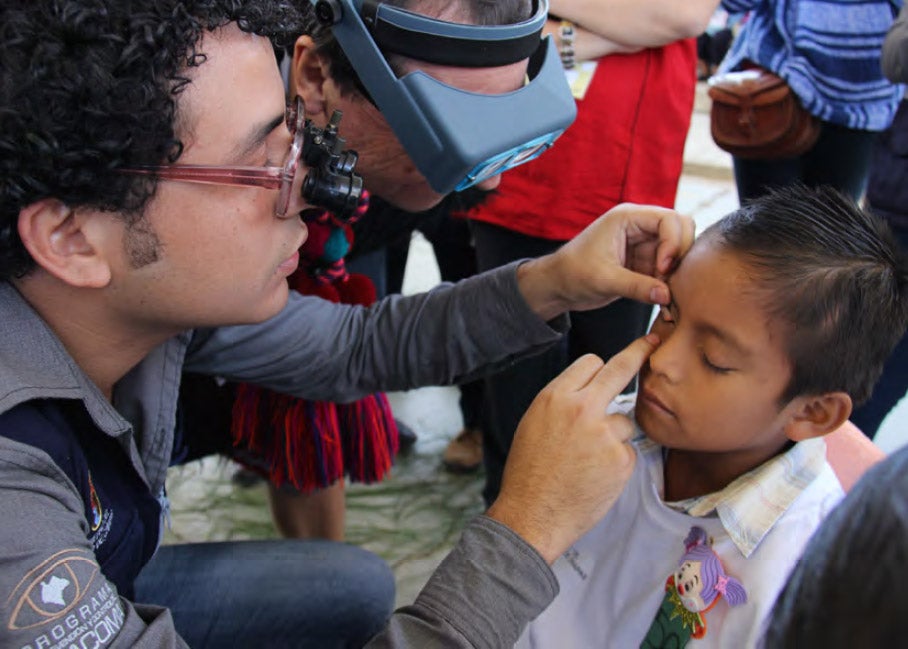 En Guyana y Haití, a pesar de los importantes avances, se estima que 5,1 millones de personas corren el riesgo de contraer filariasis linfática. El progreso se mide por el número de distritos que interrumpieron la administración masiva de medicamentos. Haití pasó de 140 comunas que necesitaban administración masiva de medicamentos a 18 (reducción del 87,2%), y Guyana pasó de ocho regiones con administración masiva de medicamentos a dos (reducción del 75%). Brasil, Colombia, Guatemala y Perú continúan los esfuerzos para eliminar el tracoma, y se estima que 5,6 millones de personas necesitan quimioterapia preventiva. Guatemala está a punto de alcanzar la meta de eliminación para el 2025, y la OPS está apoyando a otros países de la Región de las Américas a que determinen si hay más personas en riesgo, paso necesario para declararla libre de tracoma más adelante. El último foco de transmisión activa de oncocercosis se encuentra en la zona indígena yanomami, en la frontera entre Brasil y la República Bolivariana de Venezuela, donde alrededor de 36 000 personas todavía necesitan quimioterapia preventiva.
En Guyana y Haití, a pesar de los importantes avances, se estima que 5,1 millones de personas corren el riesgo de contraer filariasis linfática. El progreso se mide por el número de distritos que interrumpieron la administración masiva de medicamentos. Haití pasó de 140 comunas que necesitaban administración masiva de medicamentos a 18 (reducción del 87,2%), y Guyana pasó de ocho regiones con administración masiva de medicamentos a dos (reducción del 75%). Brasil, Colombia, Guatemala y Perú continúan los esfuerzos para eliminar el tracoma, y se estima que 5,6 millones de personas necesitan quimioterapia preventiva. Guatemala está a punto de alcanzar la meta de eliminación para el 2025, y la OPS está apoyando a otros países de la Región de las Américas a que determinen si hay más personas en riesgo, paso necesario para declararla libre de tracoma más adelante. El último foco de transmisión activa de oncocercosis se encuentra en la zona indígena yanomami, en la frontera entre Brasil y la República Bolivariana de Venezuela, donde alrededor de 36 000 personas todavía necesitan quimioterapia preventiva.
La enfermedad de Chagas es endémica en 21 países, en los que se estima que hay entre 6 millones y 8 millones de personas infectadas. Cada año se producen unos 30 000 casos nuevos transmitidos por vectores y unos 9000 casos de transmisión maternoinfantil. Se estima que 65 millones de personas corren el riesgo de contraer la infección y que cada año se producen unas 12 000 muertes por esta enfermedad, principalmente en Argentina, el Estado Plurinacional de Bolivia y Brasil. Dieciocho países de la Región han interrumpido la transmisión de la enfermedad de Chagas a nivel nacional por el principal vector doméstico, pero aún queda mucho por hacer. Aunque solo México alcanzó la condición de país libre de rabia humana transmitida por el perro, los países del Caribe nunca han notificado la enfermedad, y otros no han notificado casos durante decenios. Solo cuatro países notificaron muertes humanas por rabia transmitida por el perro en la Región en el 2023 (Estado Plurinacional de Bolivia, Haití, Perú y República Bolivariana de Venezuela).
Se han registrado algunos avances en la lucha contra la equinococosis quística/hidatidosis con mejoras en la capacidad de eliminación, como en Argentina, Brasil, Chile, Perú y Uruguay, que han incluido intervenciones en sus planes nacionales. Sin embargo, sigue siendo necesario aumentar la sensibilidad de la vigilancia y mejorar la calidad de la información disponible. Debido principalmente a su curso crónico y al diagnóstico tardío, la equinococosis suele ser costosa y complicada de tratar, y puede requerir una intervención quirúrgica extensa o un tratamiento farmacológico prolongado. La fascioliasis animal está muy extendida en la Región, pero la fascioliasis humana es un problema de salud pública solo en Perú y el Estado Plurinacional de Bolivia, donde unas 250 000 personas (principalmente de comunidades indígenas) corren el riesgo de infección debido a determinantes socioeconómicos y culturales. Desde el 2007, las campañas anuales de desparasitación han permitido reducir significativamente la fascioliasis en el Estado Plurinacional de Bolivia, y es probable que se logre eliminarla en los próximos cuatro años. En Perú, la fascioliasis humana está muy difundida en varias regiones, particularmente en zonas altoandinas y rurales.
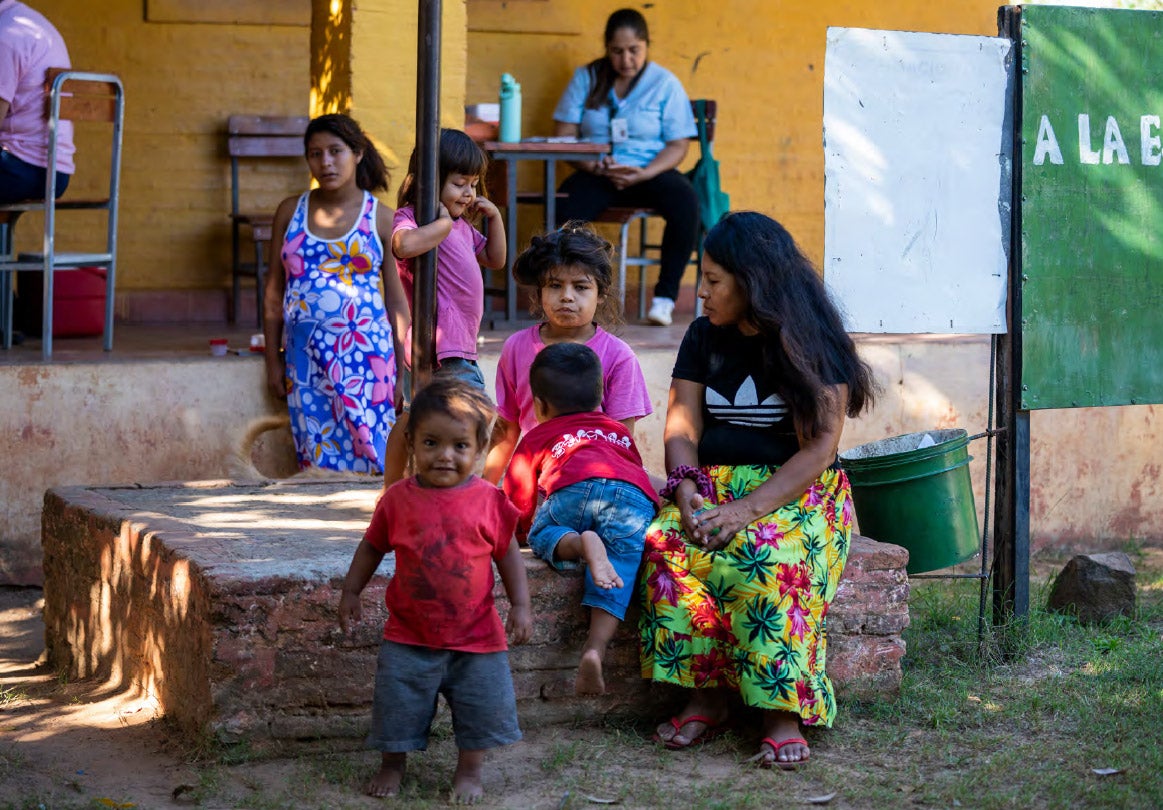 © OPS
© OPS
Para lograr la eliminación de las enfermedades infecciosas desatendidas y las enfermedades zoonóticas, los países deben mejorar la gestión, el seguimiento y la documentación de casos y, al mismo tiempo, abordar las complicaciones, prevenir las discapacidades y combatir el estigma. Las intervenciones a nivel poblacional son cruciales, como la quimioterapia preventiva, la mejora del agua y el saneamiento, la educación sobre higiene, el control de vectores y el abordaje de los aspectos sociales, económicos y culturales de las comunidades. Las actividades orientadas a enfermedades específicas, como la desparasitación, la vacunación de animales y la inspección de alimentos, también son importantes. La adopción de un enfoque integrado de “Una salud” para los seres humanos, los animales y el medioambiente también es fundamental para mantener el progreso y alcanzar los objetivos de eliminación.
Según informó el Programa Conjunto OMS/UNICEF de Monitoreo del Abastecimiento de Agua, el Saneamiento y la Higiene en el 2021, 9,1 millones de personas defecaban al aire libre en la Región (12). Esta práctica es especialmente frecuente en las zonas rurales y en las zonas urbanas de ingresos bajos. En el 2022, seis países (Colombia, Guatemala, Panamá, Perú, República Dominicana y Suriname) informaron que entre el 1% y menos del 4% de su población defecaba al aire libre, mientras que el Estado Plurinacional de Bolivia, Honduras y Santa Lucía notificaron porcentajes situados entre el 4% y el 9%, y Haití notificó un 17,7%. Se necesita más apoyo para fortalecer las intervenciones en materia de agua, saneamiento e higiene, y para mejorar el acceso a servicios de saneamiento administrados de manera forma segura, especialmente para quienes se encuentran en situación de vulnerabilidad, incluidas las comunidades rurales e indígenas.
 En 14 países se han dejado de usar combustibles contaminantes en el hogar, y 10 millones de personas han dejado de usarlos en la Región en el último decenio. Sin embargo, en el 2021, 74 millones de personas de la Región seguían dependiendo de combustibles contaminantes para cocinar o para la calefacción. Este problema afecta principalmente a zonas rurales y a zonas urbanas de ingresos bajos. En cinco países (Guatemala, Haití, Honduras, Nicaragua y Paraguay), más del 30% de la población sigue usando combustibles contaminantes. Ocho países están cerca de la meta de eliminación (menos de 10% de la población usa combustibles contaminantes: Colombia, Cuba, Ecuador, El Salvador, República Dominicana, San Vicente y las Granadinas, Santa Lucía y Suriname), y en ocho países el porcentaje se sitúa entre el 10% y el 30% (Belice, Estado Plurinacional de Bolivia, Dominica, Granada, Guyana, Jamaica, México y Perú). Las zonas rurales (24,9%) están más afectadas que las urbanas (3,5%). Las soluciones consisten en aumentar el acceso a energía limpia, mejorar la infraestructura y crear conciencia sobre los riesgos para la salud y el medioambiente.
En 14 países se han dejado de usar combustibles contaminantes en el hogar, y 10 millones de personas han dejado de usarlos en la Región en el último decenio. Sin embargo, en el 2021, 74 millones de personas de la Región seguían dependiendo de combustibles contaminantes para cocinar o para la calefacción. Este problema afecta principalmente a zonas rurales y a zonas urbanas de ingresos bajos. En cinco países (Guatemala, Haití, Honduras, Nicaragua y Paraguay), más del 30% de la población sigue usando combustibles contaminantes. Ocho países están cerca de la meta de eliminación (menos de 10% de la población usa combustibles contaminantes: Colombia, Cuba, Ecuador, El Salvador, República Dominicana, San Vicente y las Granadinas, Santa Lucía y Suriname), y en ocho países el porcentaje se sitúa entre el 10% y el 30% (Belice, Estado Plurinacional de Bolivia, Dominica, Granada, Guyana, Jamaica, México y Perú). Las zonas rurales (24,9%) están más afectadas que las urbanas (3,5%). Las soluciones consisten en aumentar el acceso a energía limpia, mejorar la infraestructura y crear conciencia sobre los riesgos para la salud y el medioambiente.
Como muestran los datos actuales, se necesita un mayor esfuerzo en varias áreas estratégicas para alcanzar las metas de eliminación de una serie de enfermedades y afecciones. Algunos factores como la pobreza, la falta de educación y el estigma desempeñan un papel importante en la transmisión continua de estas enfermedades. El progreso hacia la eliminación depende de la ampliación de intervenciones para llegar a las comunidades subatendidas, la intensificación de la acción intersectorial para reducir las desigualdades, el fortalecimiento del primer nivel de atención para prestar servicios integrados y el fomento de una participación comunitaria significativa.
Brechas en los datos y la información
Si bien ya se ha comenzado a avanzar en la implementación y medición de la eliminación de enfermedades en la Región como parte de la Iniciativa de Eliminación de Enfermedades, es importante destacar las brechas en los datos y la información que impiden que los países reconozcan plenamente el pleno potencial de la iniciativa. Las brechas en los datos sobre las actividades de eliminación de enfermedades son polifacéticas y derivan de los obstáculos que dificultan el acceso a tecnologías sanitarias y el acceso sistemático a datos, así como de las disparidades en la atención mundial, la cobertura geográfica y la población objetivo. En el caso de algunas enfermedades de alto perfil, como la infección por el VIH, la tuberculosis y la malaria, suele haber datos más completos, mientras que hay escasa información sobre las enfermedades desatendidas. Por lo general hay más datos sobre las zonas urbanas que sobre las zonas remotas, y las inequidades estructurales llevan a que no haya una vigilancia adecuada en ciertos grupos poblacionales, particularmente las comunidades indígenas. Si bien los Estados Miembros de la OPS han registrado avances en cuanto a la generación de datos a nivel nacional, hay una necesidad apremiante de contar con datos desglosados de mejor calidad a nivel subnacional para comprender las tendencias, las desigualdades y los efectos demográficos específicos.
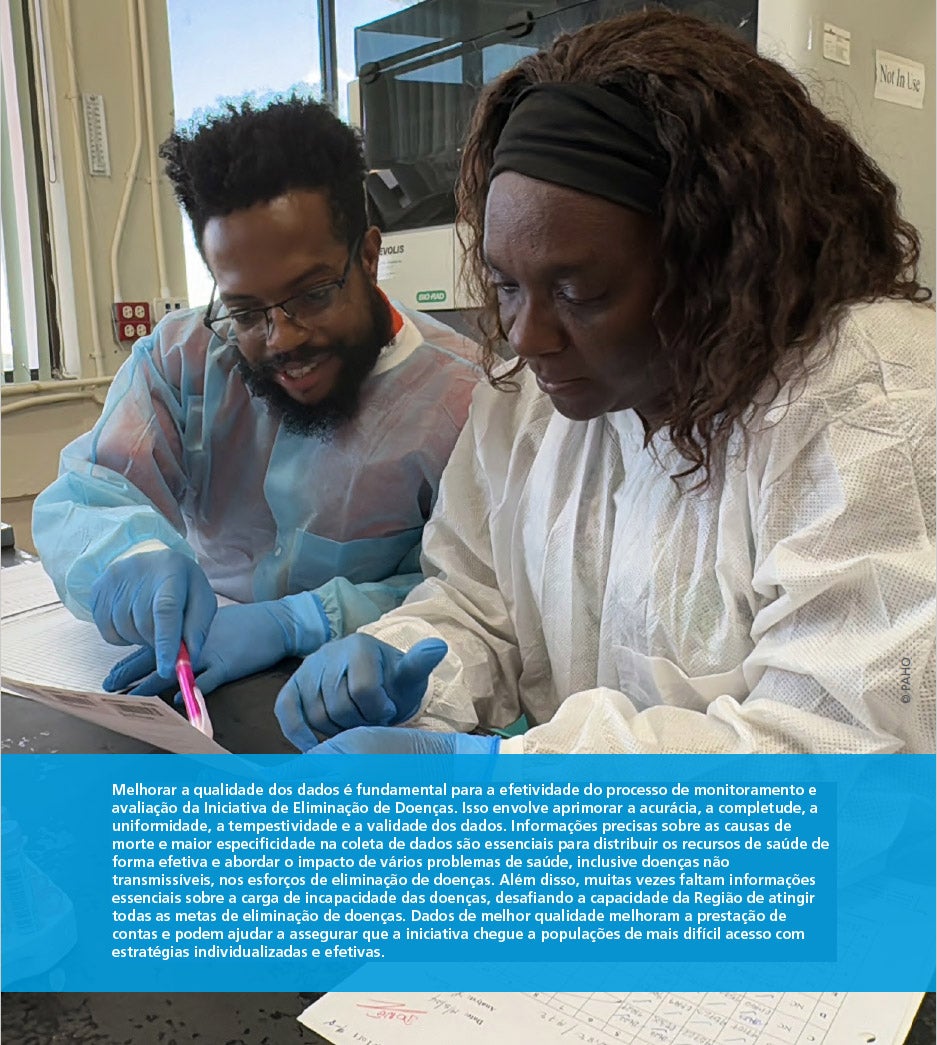 © OPS
© OPS
Referencias
- Organización Panamericana de la Salud. 18.ª reunión de la Comisión Regional de Certificación de la Erradicación de la poliomielitis en la Región de las Américas (RCC). Washington, D.C.: OPS; 2024 [consultado el 11 de septiembre del 2024]. Disponible en: https://www.paho.org/es/noticias/26-7-2024-18a-reunion-comision-regional-certificacion-erradicacion-poliomielitis-region.
- Organización Panamericana de la Salud. OPS actualiza a profesionales de la salud ante aumento de casos de sarampión. Washington, D.C.: OPS; 2024 [consultado el 11 de septiembre del 2024]. Disponible en: https://www.paho.org/es/noticias/21-3-2024-ops-actualiza-profesionales-salud-ante-aumento-casos-sarampion.
- Organización Mundial de la Salud. World malaria report 2023. Ginebra: OMS; 2023. Disponible en: https://iris.who.int/handle/10665/374472.
- Organización Mundial de la Salud. Perfil de tuberculosis: Región de las Américas de la OMS. Ginebra: OMS; 2022 [consultado el 11 de septiembre del 2024]. Disponible en: https://worldhealthorg.shinyapps.io/tb_profiles/?_inputs_&group_code=%22AMR%22&entity_type=%22group%22&lan=%22ES%22.
- Organización Mundial de la Salud. Global tuberculosis report 2023. Ginebra: OMS; 2023. Informe completo en inglés disponible en: https://iris.who.int/handle/10665/373828.
- Organización Panamericana de la Salud. Tuberculosis. Washington, D.C.: OPS [fecha desconocida] [consultado el 11 de septiembre del 2024]. Disponible en: https://www.paho.org/es/temas/tuberculosis.
- Global hepatitis report 2024: action for access in low- and middle-income countries. Ginebra: Organización Mundial de la Salud; 2024. Licence: CC BY-NC-SA 3.0 IGO. Disponible en: https://iris.who.int/bitstream/handle/10665/376461/.9789240091672-eng.pdf?sequence=1
- Organización Mundial de la Salud. HIV statistics globally and by WHO Region, 2024. Ginebra: OMS; 2024. Disponible en: https://cdn.who.int/media/docs/default-source/hq-hiv-hepatitis-and-stis-library/j0482-who-ias-hiv-statistics_aw-1_final_ys.pdf?sfvrsn=61d39578_3.
- Organización Panamericana de la Salud. VIH/SIDA Washington, D.C.: OPS [fecha desconocida] [consultado el 11 de septiembre del 2024]. Disponible en: https://www.paho.org/es/temas/vihsida.
- Organización Panamericana de la Salud. Situación del VIH en las Américas. Washington, D.C.: OPS [fecha desconocida] [consultado el 9 de septiembre del 2024]. Disponible en: https://www.paho.org/es/situacion-vih-americas.
- Organización Panamericana de la Salud. Sífilis. Hoja informativa. Washington, D.C.: OPS [fecha desconocida] [consultado el 9 de septiembre del 2024]. Disponible en: https://www.paho.org/es/temas/sifilis.
- Organización Panamericana de la Salud. Agua y Saneamiento. Washington, D.C.: OPS [fecha desconocida] [consultado el 10 de septiembre del 2024]. Disponible en: https://www.paho.org/es/temas/agua-saneamiento.
TEMA ACTUAL
CAPÍTULOS
- Informe Ejecutivo
- Panorama de la Iniciativa de Eliminación de Enfermedades
- Progreso regional hacia las metas de eliminación de enfermedades
- Perspectivas sobre las intervenciones relacionadas con enfermedades específicas
- Acelerar los esfuerzos de eliminación de enfermedades en la Región
- Lograr la eliminación




